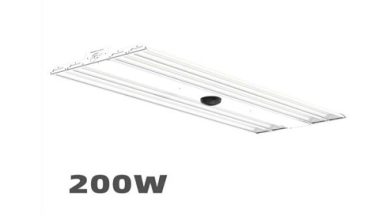Understanding how the front end and back end of WordPress interact

The front end of a website is the part that is visible to the user. It’s the part of the website where content is displayed, including blog posts and pages, blog archives, and search results.
The back end of wordpress development companies is a collection of software systems that work in tandem to enable an individual or organization to communicate with its customers or readers. The back end can include email services, social media platforms, search engines, chat services, and many more. The reason you should care about your website’s back end is because it plays a huge role in your business’s success. If you are not using the right tools for your business goals, you’re limiting your options and making decisions based on convenience rather than improving your bottom line.
What is the front end of WordPress?
The front end of WordPress is the part of a website that users see first. This includes the header, footer, and overall look and feel of the website. It also includes the theme, which is the overall color scheme of a website and is used to organize content and themes.
The front end of WordPress handles all front-end requests, including page loading, theme loading, and plugin loading. This means it handles all requests related to a webpage’s appearance, content, and functionality. It manages comments and user posts on a website as well. Finally, it interacts with the back end of WordPress to manage site content and settings.
The front end of WordPress acts as an interface between users and backend PHP code. The more you understand about this part of your website, the easier it will be for you to take advantage of all its features.
What is the backend of WordPress?
The back end of WordPress is responsible for managing site content, formatting, and publishing. It also manages themes, plugins, and the database. The back end of WordPress is essential in ensuring your website runs smoothly and lightning fast. This effectively ensures that your website can deliver the same content to visitors across multiple devices with minimal delays.
The back end of WordPress can be customized to suit your specific needs and requirements. This allows users to create and configure their websites in accordance to their own preferences. Through customization, users can easily integrate plugins and themes in their websites in a way that matches their brand image and style clearly.
The back end of WordPress is a powerful tool that can be used to increase website traffic and engagement. With it, you can easily manage various aspects of your website from a single platform. This helps you improve website performance and efficiency efficiently. Overall, the back end of WordPress is essential in ensuring your website runs smoothly and lightning fast.
How does the front end and back end of WordPress work together?
In the context of WordPress, the front end and the back end are two parts that work in tandem to create a website. The front end is the part of WordPress that you see when you visit a website or blog. It’s the part of a website that a user interacts with. This includes things like the website’s header, footer, and content area. The back end is the part of WordPress that manages the website’s content, posts, comments, and pages. It’s responsible for storing information about users, posts, comments, and pages in the database.
The back end also interacts with the database to store information about your website’s posts and pages in it. The front end receives data from the back end to update and display your website’s content.
The front-end and back-end parts of WordPress work together to ensure smooth operation for website visitors.
How can you use the front end of WordPress to improve your website?
– WordPress is a popular content management system that can help you customize the look and feel of your website. This includes features such as customizing the colors, fonts, and menus of your website.
– Through plugins and themes, you can add features such as custom headers and footers, widgets, and other elements to your website. These components can add sophistication and sophistication to your website’s user experience.
– The more complex features you add to your website through plugins and themes, the more control you have over the look and feel of your website. This gives you more versatility in designing a dynamic website.
– Many people use WordPress for its easy-to-use interfaces for creating pages, posts, and other elements of a website. Using it also means you don’t need any HTML or coding skills to create engaging websites.
– You can use WordPress to easily optimize your website for better search engine rankings. By using SEO tools such as keyword analysis, you can ensure that the content on your website is relevant to users searching online. You can also implement other measures such as hosting your website on a server with high PageRank or ensuring that your server is secure and fast.
– Finally, using WordPress can help you track metrics related to the performance of your website. This includes tracking things like hits, clicks, or bounces.
These measures will help optimize the effectiveness of your content marketing efforts and improve the conversion rate of your site.
What are the disadvantages of using the front and back ends of WordPress?
The front and back ends of WordPress are powerful tools, but they can be dangerous if used incorrectly. The front end is where you’d find the main content area of your website, such as the Home page and blog posts. The back end is where you’d find any functionality, such as setting up a registration or commenting system. Using the wrong front or back end can lead to security risks and crashes.
The main difference between the two is that the back end is more versatile than the front end. However, both are required for a functioning website. If you use the front-end and back-end of WordPress at the same time, your website may not work correctly. This could result in errors or slow loading times. Additionally, using a front-end and back-end interchangeably can cause confusion in terms of how they work together in order to create a functional website.
Conclusion
You now know that the front end of WordPress is what you see in your browser. It’s the website, built with HTML and CSS, while the back end is where your WordPress-powered website is running. The back end gives your website access to data and functionality, allowing you to create and manage content, pages, posts, and more. The front end is what users see when they visit your website. You use both to create great websites that work well on any device. Knowing how the front end and back end of WordPress interact and using them together to build better websites will help you make informed decisions in designing websites that are user-friendly.




